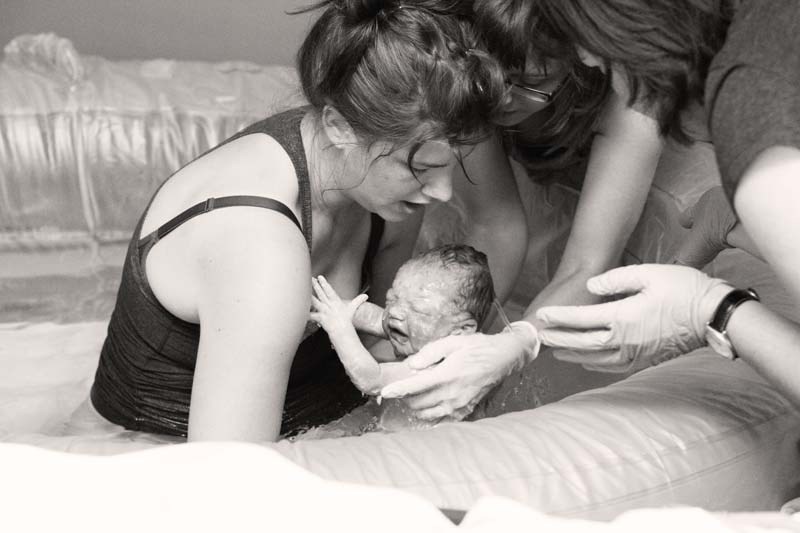Careful vacation planning is part of Stephanie Werkman's routine, especially when she knows someone's going into labour.
The St. Albert resident is not a doula or nurse. She's a birth photographer, part of a growing profession that is increasingly attracting the interest of expectant mothers who want to capture one of life's most important moments.
"It's one of those life-changing events that I think just needs to be documented in photos," Werkman said. "Once you come out of labour you can see the pictures and all the beautiful moments there were and you won't forget them."
Birth was once considered a private affair, best kept to the closest of family members. Fathers took pictures of newborns, sometimes even of the birth. Eventually, Werkman said one mother decided to give her husband a break and get a professional into the room and birth photography was born.
The International Association of Professional Birth Photographers, with headquarters in the United States, now counts about 400 members. A similar group in Canada, the Canadian Birth Photographers, has more than 30 members listed. To qualify for membership, photographers must have photographed at least two births and have ongoing proof of one birth photography per year.
Werkman opened her home-based business Catch Light Photography in February, focusing on maternity and family photography. It was not until she started taking pictures of newborns that she discovered her passion for births.
Her birth package includes photography for a maximum of six hours, with one to two hours in active labour. For $750 parents receive 30 to 50 high resolution, edited digital files on disc and two prints up to 11 by 14 inches.
While there are no courses on birth photography available in her area, she said she read about it online and learned from the experience. The trick is to have your gear ready to go and remain unobtrusive, she said, like a fly on the wall.
"I don't want to be in the way, be loud. I just want to disappear and take pictures," she said.
Client Andrea Veldkamp said she did not even notice Werkman when she went into labour. The two women knew each other from church and when Werkman approached her about taking pictures at her fourth birth, she was happy to give it a try.
On call
Werkman knows the due dates of the mothers months in advance and is on call two weeks away from the women giving birth. She only takes one birth per month to avoid overlapping due dates. So when Veldkamp called in the middle of the night Werkman was ready to rush out the door.
When she arrives, she said most women are between four and seven centimetres dilated, which allows her to capture the later stages of labour and preparations for the birth. It also gives her time to compose herself, which was difficult the first time.
"I had my camera ready and I was just clicking pictures and having tears streaming down my face," she said. "It was just so awesome, just such a great experience."
It's usually the women who call on the photographer to come for the birth of their child, said Werkman. The men are either against it or don't care much until they see the pictures.
Expectant mothers should also check whether their hospital allows photography during birth. In some cases, the doctors allowed photographers to be present during C-sections. In others, they told them to stay out, or not use their flash.
For those worried about how graphic the photos could be, Werkman assures that everything is done tastefully.
"I am not down by the feet taking pictures. I am usually by the head," she said. "What I want to do is capture the emotion, what Andrea would see when the baby is first born and see her expression and her husband's expression."
Veldkamp remembers thinking she had to keep it together and look good during the birth. But when she got into labour that all went out the window.
Even so, she loves the candidness of the photos, the emotions on her face and her husband's. Some of the pictures are now displayed in her son's room, others she carries with her in a small photo album.
"You don't notice (when you are in labour) what your husband looks like. You don't notice all the other things going on," she said. "So I just thought that would be a really neat way of helping to remember because you forget very, very fast what it was like and how amazing it was."




